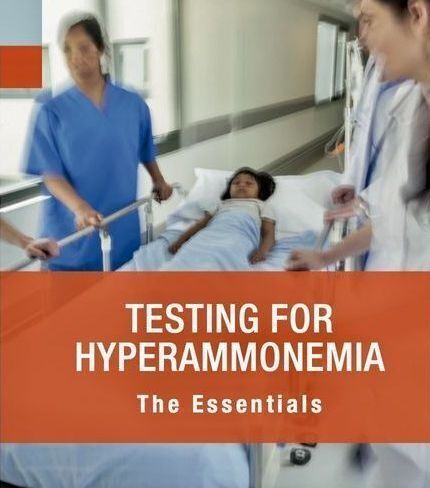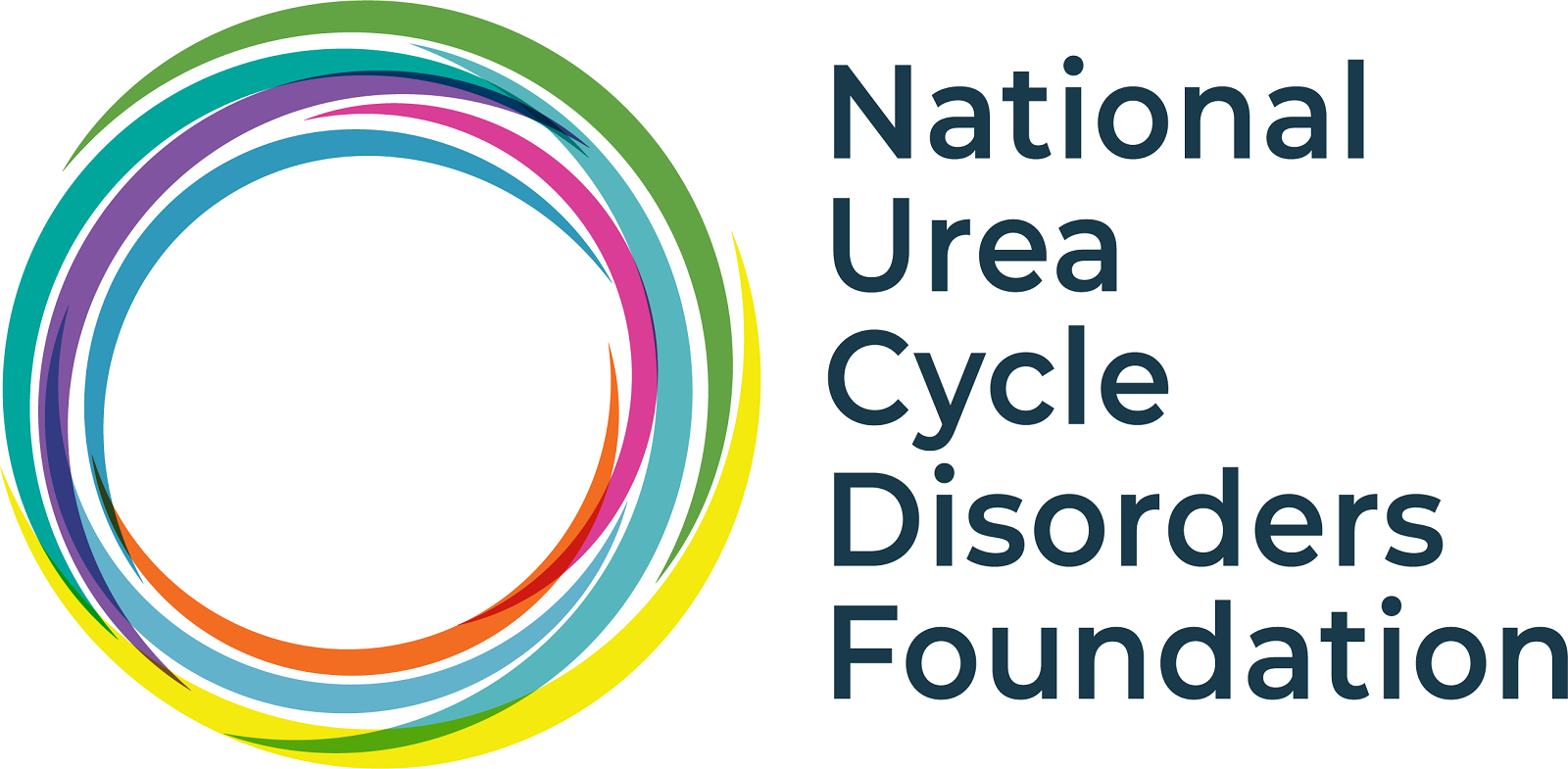Diagnostic Evaluation

DIAGNOSIS/TESTING
The diagnosis of a urea cycle disorder is based on the evaluation of clinical, biochemical, and molecular data, including:
- Plasma ammonia level: The sample must be placed immediately on ice and run STAT, or false elevations can occur. Obtaining Accurate Ammonia Levels
- Plasma quantitative amino acid analysis can be used to help diagnose a specific urea cycle disorder.
- Urinary orotic acid is measured to distinguish CPSI deficiency and NAGS deficiency from OTC deficiency.
- Molecular genetic testing.
DIAGNOSIS EVALUATION
- Plasma ammonia measurement is a simple yet important screening in the ED for patients with unexplained stupor or delirium. Recognizing the symptoms of the disease is often delayed and/or mistaken. Obtaining Accurate Ammonia Levels
- Although UCD is usually identified in early childhood, partial or mild forms may not be recognized until unmasked by an environmental trigger that can lead to catastrophic hyperammonemic crisis.
- Altered consciousness should always lead to blood ammonia measurement.
- Ornithine transcarbamylase deficiency should be suspected in adult patients who develop recurrent hyperammonemia and encephalopathy following bariatric surgery.
- The diagnosis of NAGS or OTC deficiency should be considered in nonhepatic adult patients with hyperammonemic coma, particularly if they have a history of protein avoidance and neurological symptoms.
TREATMENT INFORMATION
Treatment options for Urea Cycle Disorders
New England Consortium of Metabolic Programs Treatment Guidelines
Rare Diseases Clinical Research Network Urea Cycle Disorders Consortium
References
- Hainline B, Clay A. Hyperammonemia in the ICU. Chest 2007;132;1368-1378
- Lien J, Nyhan WL, Barshop BA. Fatal Initial Adult-Onset Presentation of Urea Cycle Defect. Arch Neurol. 2007; 64(12):1777-1779
- Aronson PL, Mistry RD. Ornithine transcarbamylase deficiency presenting as hepatitis. Ped Emerg Care. 2011 Jun;27(6):527-9
- Weng TI, Shih FF, Chen WJ, Unusual causes of hyperammonemia in the ED. Am J Emerg Med. 2004 Mar;22(2):105-7
- Hu, WT, Kantarci, OH, Merritt II, JL, McGrann , Dyck PJB, Lucchinetti CF, Tippmann-Peikert, M. Ornithine Transcarbamylase Deficiency Presenting as Encephalopathy During Adulthood Following Bariatric Surgery. Arch Neurol. 2007;64:126-128
- Fenves. Fatal Hyperammonemic Encephalopathy After Gastric Bypass Surgery. Am J Med. 2008 Jan;121(1):e1-e2
- Enns, GM, O’Brien, WE, Kobyashi K, Shinzawa H, Pellegrino J. Postpartum “Psychosis” in Mild Argininosuccinate Synthetase Deficiency. Obstetrics and Gynecology, Vol. 105, No. 5, Part 2, May 2005
- Rimbaux S, Hommet C, Perrier D, Cottier JP, Legras A, Labarthe F, Lemarcis L, Autrer A, Maillot F. Adult onset ornithine transcarbamylase deficiency: an unusual cause of semantic disorders. J. Neurol. Neurosurg. Psychiatry 2004;75;1073-1075
- Smith W, Kishnani PS, Lee B, Singh RH, Rhead WJ, Sniderman King L, Smith M, Summar M. Urea Cycle Disorders: Clinical Presentation Outside the Newborn Period. Crit Care Clin 21 (2005) S9–S17
- Priester T, Khoo, TK, Fernandez-Perez E, Regner K, Tracy J, Mitchell S, Summar M, Babovic-Vuksanovic D. Hyperammonemia from a urea cycle disorder presenting in adulthood. Open Critical Care Medicine Journal. 2009;2;9-12
- Enns G, Packman S. Diagnosing inborn errors of metabolism in the newborn: clinical features. NeoReviews. 2001;2;183-190
- Barrueto F, Hack J. Hyperammonemia and coma without hepatic dysfunction induced by valproate therapy. Academic Emergency Medicine. October 2001, Vol. 8, Issue 10, 999-1001
- Gaspari R, Arcangeli A, Mensi S, Schembri-Wismayer D, Tartaglione T, Antuzzi D, Conti G, Proletti R. Late-onset presentation of ornithine transcarbamylase deficiency in a young woman with hyperammonemic coma. Annals of Emergency Medicine. Jan 2003; Vol. 41, Issue 1;104-109
- Houston B, Reiss K, Merlo C. Healthy, but comatose. Am J Med. 2011 Apr;124(4):303-5.
- Summar M, Barr, F, Dawling S, Smith W, Lee B, Singh R, Rhead W, Sniderman-King L, Christman B. Unmasked adult-onset urea cycle disorders in the critical care setting. Crit Care Clin 21 (2005) S1–S8
- Schmidt J, Kroeber K, Irouschek A, Birkholz T, Schroth M, Albrecht S. Anesthetic management of patients with ornithine transcarbamylase deficiency. Pediatric Anesthesia 2006 16: 333–337
- Scaglia F, Zheng Q, O’Brien W, Henry J, Rosenberger J, Reeds P, Lee B. An Integrated Approach to the Diagnosis and Prospective Management of Partial Ornithine Transcarbamylase Deficiency. Pediatrics 2002;109;150-152
- Enns, GM. Neurologic Damage and Neurocognitive Dysfunction in Urea Cycle Disorders. Semin Pediatr Neurol 15:132–139
- Gropman A, Rigas A. Neurometabolic disorders: urea cycle disorders, outcomes, development and treatment. Pediatric Health (2008)2(6)
- Krivitzky L, Babikian T, Lee H, Hattiangadi Thomas N, Burk-Paull K, Batshaw ML. Intellectual, Adaptive, and Behavioral Functioning in Children with Urea Cycle Disorders. Pediatr Res. 2009 July ; 66(1): 96–101
- Seashore, MR. What’s new in the urea cycle: new research and treatments. Grand Rounds Presentation. Yale University School of Medicine, Department of Genetics. June 2010
- Testai FD, Gorelick PB, Inherited Metabolic Disorders and Stroke Part 2 Homocystinuria, Organic Acidurias, and Urea Cycle Disorders. Arch Neurol/Vol 67 (No. 2), Feb 2010 148-153
